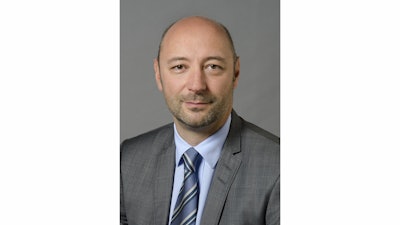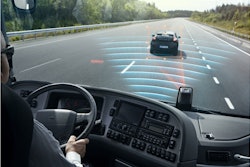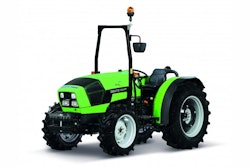
responses by Peter Lauwers, President, Road Construction Equipment, Atlas Copco
[GLOBAL] What are the emerging economies you see with the most potential for expansion and growth for off-road equipment?
With relatively few paved roads in the BRIC and MINT countries, there are substantial possibilities for mid- and long-term growth of off-road equipment. Each of them, however, currently has its own challenges to contend with, including political uncertainty. As a result, governmental spending on infrastructure will continue at a slow pace, so we won’t see strong market development in these countries in the near future.
The U.S. market, on the other hand, appears to be stabilizing, which creates an excellent opportunity to grow our market presence. We are focusing product development efforts to meet more needs of the U.S. contractor, and that includes incorporating intelligent compaction for asphalt rollers and a full line of pavers.
[GLOBAL] Have the current conditions in Russia/Ukraine or other international/regional situations affected that outlook and opportunity? If yes, how?
In Russia there are, of course, sparks of uncertainty, and it’s not clear in which direction the situation will develop. Despite a fluctuating ruble, our business as a whole has not been affected substantially. But issues escalate, and it’s possible we’ll see the situation there begin to impact markets for our equipment. There are rumors that Russia might implement a form of market protectionism, favoring equipment with high local content of components, and that is concerning.
[POLITICS] What government regulations, standards and/or bills were passed in the past year that most affected off-road equipment manufacturers?
It’s quite clear that Tier 4 Final regulations have had a major impact on our business, from engineering to sales. But we’ve welcomed that change, as it supports Atlas Copco’s overall mission to create sustainable products. Where we might see more of a challenge is with the costs of new equipment. The additional research and development, as well as higher costs of the Tier 4 engines and components, means higher prices than what contractors are used to seeing. What we do, in addition to adding Tier 4 technology to new models, is incorporate upgraded or additional value-added features. For example, ECO Mode on our rollers and VarioSpeed on our pavers give owners a fuel savings of 10 to 20 percent, depending on the load of the equipment. With these kinds of additional features we’re trying to help contractors save where they can and shorten their return on investment of Tier 4 models.
[CONSOLIDATION] Have you seen an increase in industry consolidation through mergers and acquisitions this year over previous years? If yes, to what do you attribute this trend?
No. The off-road equipment market is dominated by several large companies, which does not make consolidation easy. The greatest opportunity for acquisitions and mergers is in China, since it has a high concentration of local, smaller companies.
[CONSOLIDATION] Now that Tier 4 Final is underway, many companies’ engineering resources have been freed up to refocus on developing new products instead of refining existing products to meet regulatory expectations. Have you seen this refocusing? What does this mean for future equipment designs and advanced system development?
Atlas Copco viewed the process of reaching Tier 4 Final as an opportunity to improve and upgrade our equipment from emission, energy-efficiency and man-machine interface points of view. Whether we want a specific regulation or not, it’s almost always a driver for product development. And if it is, for the most part, agreed upon between all stakeholders, it also can be a driver for business development. Unfortunately, it always comes at an initial cost, not only for us as a manufacturer but also for our customers. Hopefully we can look back 10 years from now and conclude Tier 4 Final was a success, like the ban of chlorofluorocarbons.
[CLIMATE] Have you seen extreme temperature and weather conditions affect the performance expectations of off-road equipment? If so, how?
Temperature and climate conditions are always a key parameter we consider when developing our equipment, from the durability of materials to operator comfort. Just like our customers we expect the equipment we build to withstand the harsh conditions they are used in.
[TECH OF THE FUTURE] Where is the heavy-duty vehicle industry lagging technologically?
There is a big opportunity to reduce emissions on equipment by replacing hydraulic components with electric ones. For example, manufacturers could consider replacing hydraulic pumps with electric motors powered by batteries, which would lower the kW size of the main diesel engine. This not only reduces emissions, but also results in a quieter machine.
[TECH OF THE FUTURE] What technology breakthroughs would help to propel mobile off-road vehicles ahead?
Long-lasting battery technology would be well received in this industry. This will allow contractors to maintain the same production rates they get with their diesel-powered equipment, but without the fuel costs. This will be a serious consideration as we move forward and battery technology evolves.
[TECH OF THE FUTURE] What current technologies have the most potential for future gains?
It would be most beneficial if there were a standard data transmission protocol that could be used across all manufacturers’ models. Most of our customers run mixed fleets with equipment from multiple manufacturers, and each one of those manufactures has its own programs for monitoring data, such as information related to material density and fuel consumption. One standard program across all makes and models would mean operators could view data more efficiently and easily.
[CHALLENGES] What new challenges have arisen that affect how you design and manufacture your product, how you do business and/or how you go to market?
Coming back again to Tier 4 Final, there is a clear difference in requirements between more- and less-regulated countries. The U.S. and Europe certainly lead the way for emissions regulations, but there are still countries that need Tier 1 or Tier 2 machines because they don’t have the ultra-low sulfur diesel (ULSD) that’s required to run the Tire 4 models. For the time being, this is an ideal situation; as U.S. and Europe users upgrade to Tier 3 or Tier 4, those older models are sold to users in less regulated countries. But as this equipment starts being replaced with Tier 4 Final machines, there could be some bigger issues manufactures will need to contend with to meet demands in those markets. That would include essentially “de-Tiering” equipment so it can be used in those countries.
In the coming years we hope these markets will evolve so used Tier 3 and Tier 4 Interim vehicles can be sold there in the future.



















